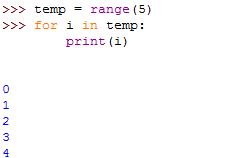Like a string, a list is a sequence of values. In a string, the values are characters; in a list, they can be any type. The values in list are called elements or sometimes items. There are several ways to create a new list; the simplest is to enclose the elements in square brackets ( [ ]):
[10, 20, ‘span’, [30,40]]
A list within another list is said to be nested. A list that contains no elements is called an empty list; you can create one with empty brackets, []. List that contain consecutive integers are common, so Python provides a built-in function to create them:

range takes two arguments and returns a list that contains all the integers from the first to the second, including the first but excluding the second! With one argument, range starts at 0:

If there is a third argument, it specifies the space between successive values, which is called the ‘step size’.

from Thinking in Python